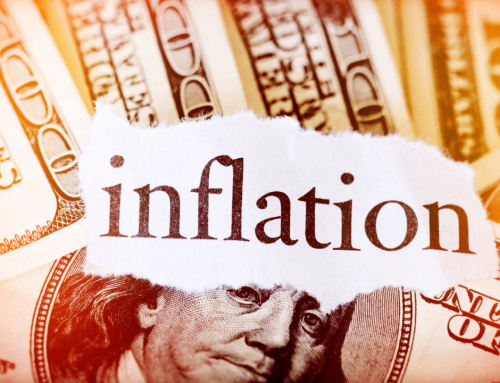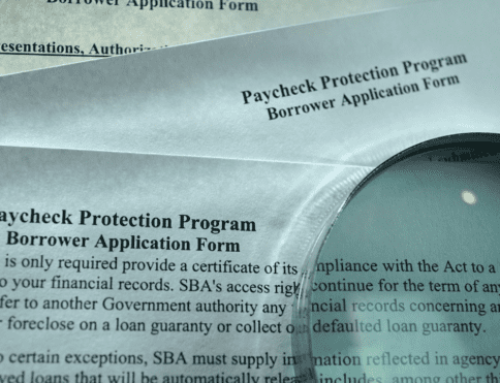We’ve written extensively in this blog about COVID-19’s impact on various aspects of the U.S. economy, including:
- COVID and Collections Policies
- Navigating Remote Employment
- How Americas Spend their CARES Act money
- Forbearance and the CARES Act
Today, we turn to an extensive, and important study published by Liberty Street Economics, covering the disproportionate, negative impact the pandemic has had on U.S. families with children.
Using new data from the Federal Reserve’s Survey of Consumer Expectations, the authors find that households with children, in general:
- Experience greater job and incomes loss, requiring them to dip into (often limited) savings
- Miss rent, mortgage and debt payments at higher levels.
- Report significantly higher levels of “food insufficiency”
Not surprisingly, these same families rely heavily on external support, from government unemployment benefits to food stamps to support from friends or families.
The authors do stress that the CARES Act, along with other public and private interventions have helped to minimize the level of loan delinquencies. This, of course, is a result of both income support and forbearance on mortgage and student loan payments.
REPORTING ADVERSE OUTCOMES
The table below illustrates the dramatic differences in outcomes between households without children, households with children and single-parent households.
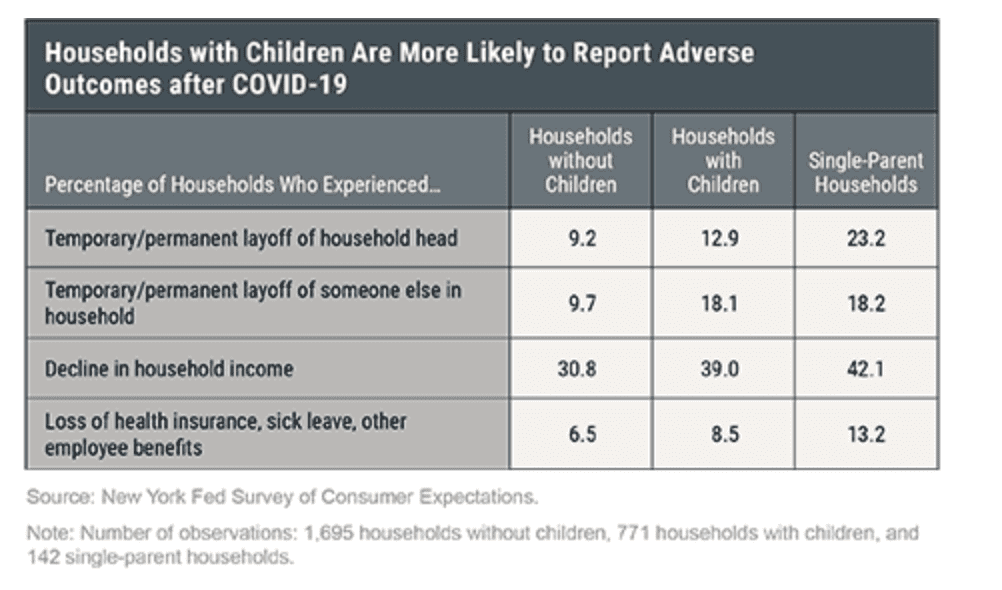
As we can see, the pandemic has had significant negative outcomes for families with children, especially single-parent households:
- More than 23 percent of single-family households experienced a temporary or permanent layoff of the head of that household, nearly 2 ½ times the level of households without children.
- While all households experienced a decline in income, the impact was felt most deeply by single-parent households, with more than 42 percent reporting a loss of household income.
- Single-parent households experienced a loss of health insurance, sick leave and other benefits at TWICE the rate of households without children.
The next table takes a deeper look at the pandemic’s impact across a variety of outcomes. Again, families with households and, especially, single-parent households have experienced much greater distress than households without children, most notably:
- 41 percent canceled or postponed major purchases
- 62 percent postponed in-person visits to healthcare professionals
- Nearly 37 percent dipped into savings to cover expenses
- 18.6 percent had to rely on support from families and friends
- Over 27 percent had to skip rent, mortgage or credit card payments
- A staggering 11.5 percent of single-family households had trouble finding food-nearly four times the rate of households without children
- Over 34 percent received aid through SNAP, Supplemental Nutrition Assistance Program (Food stamps)
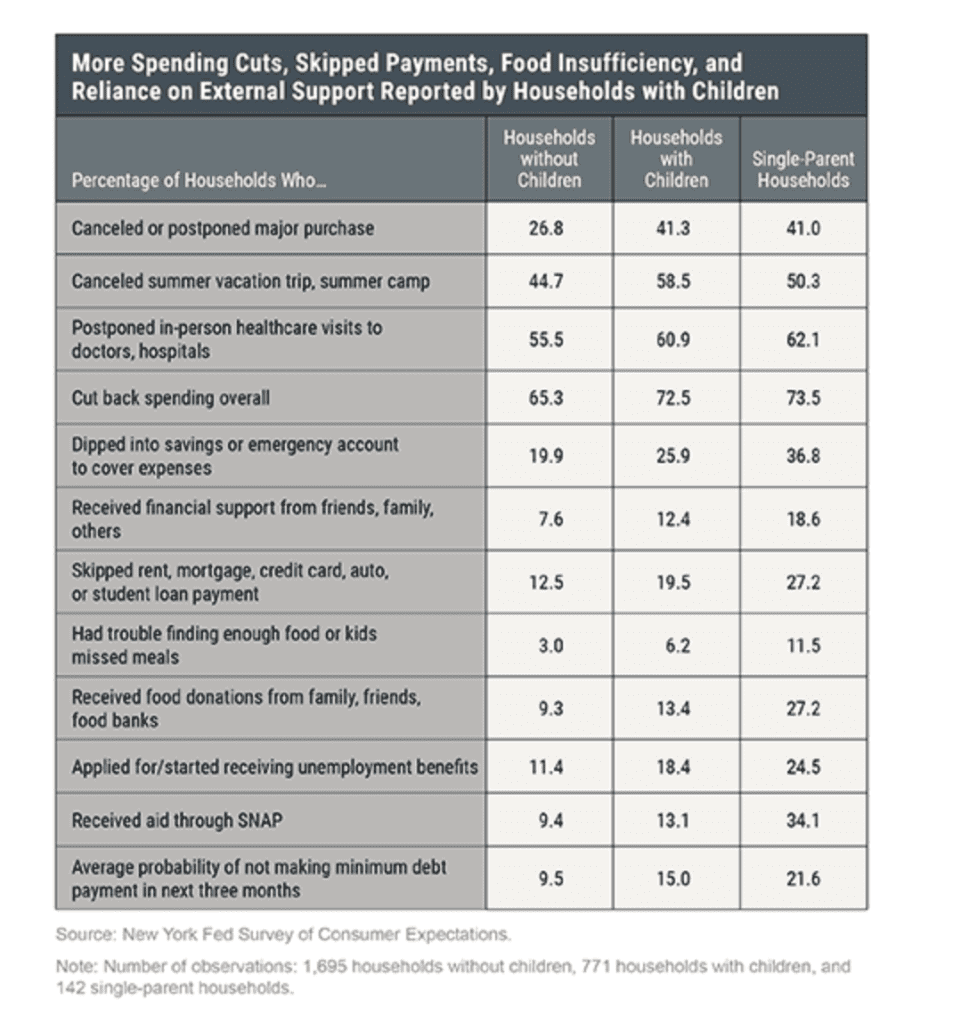
FOOD INSUFFICIENCY AND GOVERNMENT SUPPORT
Finally, the study zeroes in on two areas of critical importance: food insufficiency and government support. The charts below look at these two outcomes through the lens of race (white vs. non-white outcomes) and three levels of neighborhood income based on zip code data (low, medium, high income).
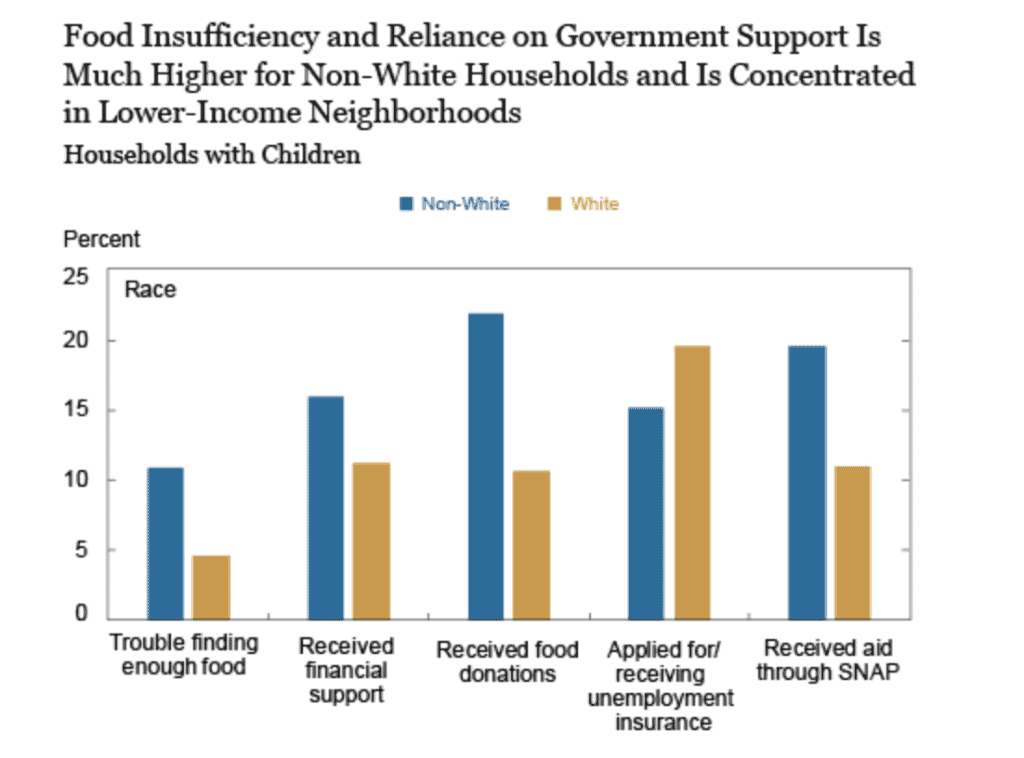

As you can see, with the exception of “applying for and receiving unemployment benefits,” non-white households have experienced negative outcomes at much higher levels during the pandemic. And, as would be expected, we see similar negative outcomes for those families living in the lowest income neighborhoods, with one exception: middle income households report having trouble finding enough food at a higher rate than the lowest income neighborhoods.
In stark terms, this Liberty Street Economics study illustrates the extent to which COVID-19 intensified the financial distress of households with children, people of color and those living in the lowest income neighborhoods.
As this is being written, a new COVID relief bill has been signed into law. As relates to family support, the highlights of the new legislation include:
- $600 direct payment checks for every adult and child earning up to $75,000.
- Unemployment benefits: Lawmakers agreed to extend enhanced unemployment benefits for jobless workers, who will receive up to $300 per week through mid-March. Self-employed people and gig workers will also receive extended assistance.
- Rental assistance: The measure includes $25 billion to help families pay their rent, and it extends the eviction moratorium now in effect until Jan. 31.
- An additional $13 billion for SNAP
SOURCE
If you’d like to learn more about the extensive suite of Data Analytics products and services developed for the Collections Industry, contact:
Kacey Rask : Vice-President, Portfolio Servicing
[email protected] / 513.489.8877, ext. 261
Error: Contact form not found.

